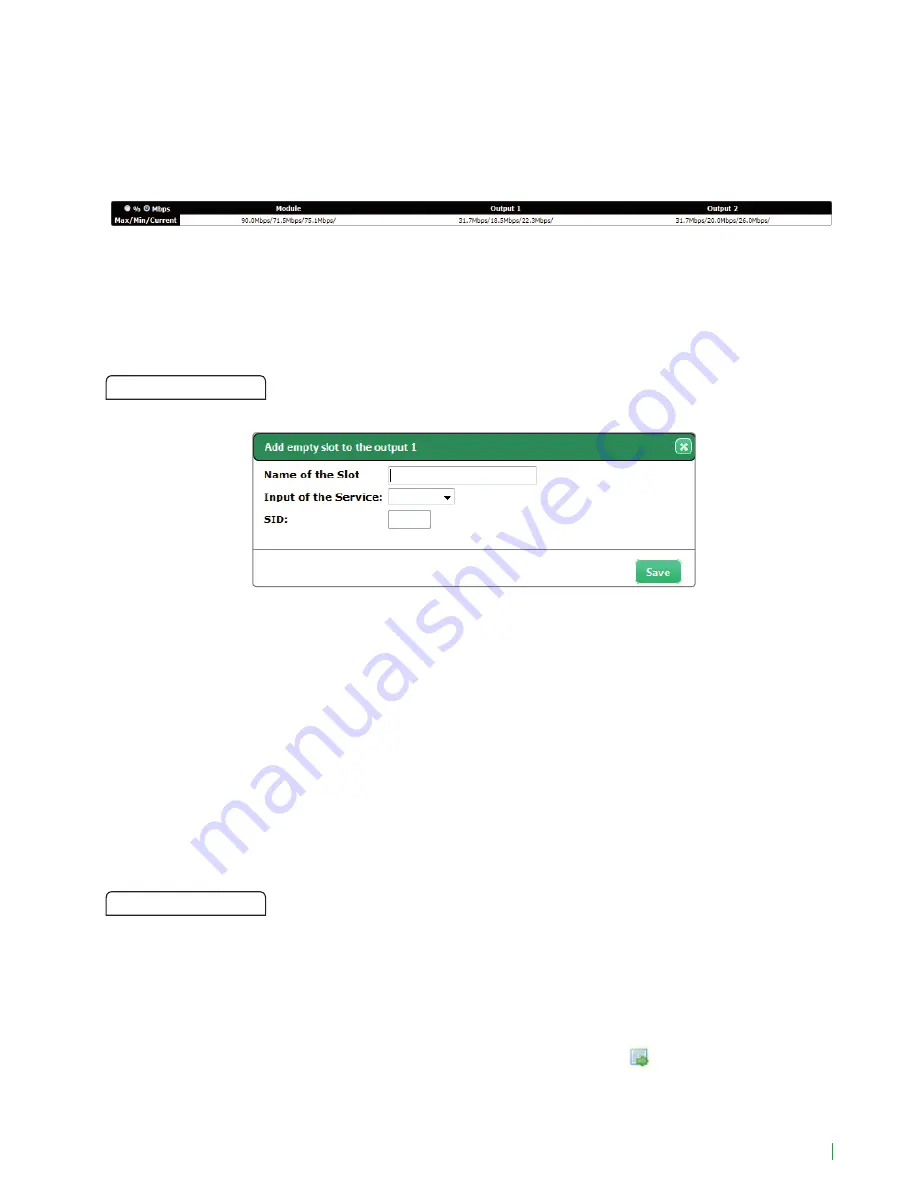
37
SUBTITLES: It allows to block or to not block, to decript or to not decrypt, the subititling information of
the source signal.
DATA: It allows to block or to not block, to decript or to not decrypt, the data information of the source
signal.
Finally, in this window information about free space of the module and of the output carriers is
displayed.
The data can be displayed in percentage (selecting “%”) or in absolute value, expressed in Mbps
(selecting “Mbps”). The displayed data are:
MAX: Maximum free space that has been measured since the last start of the headend.
MIN: Minimum free space that has been measured since the last start of the headend.
CURRENT: It is the free space that exist in a specific moment.
Output Services
ADD EMPTY SLOT: Used to create an empty slot in order to add a service in the future.
Complete the following details: Name of the slot, service input, SID.
The “clone” option is used to copy a service in the same output as many times as necessary. This means
a different audio can be assigned to each one on the same video.
Click on the recycle bin icon to delete a service.
The changes will be saved when retuning the TV set.
The “cut” option (scissors icon) provides the option to delete the current service and leave the space
empty in order to position another one in its place, thus avoiding having to retune the TV set. A service
can also be replaced by dragging another one onto it.
Services Management
Once the channel lineup is completed, through SERVICES MANAGEMENT tab, we could perform the
following actions:
- To edit LCN, Service name and SID parameters.
- To decrypt or not a specific service.
- To transcode or not a specific service.
- To modify the management of the elementary streams, through Edit PIDSs
button . Through this
option, user can force the blocking of a specific PID, pass it to the output or let the headend makes the
decision of processing it or not.





































